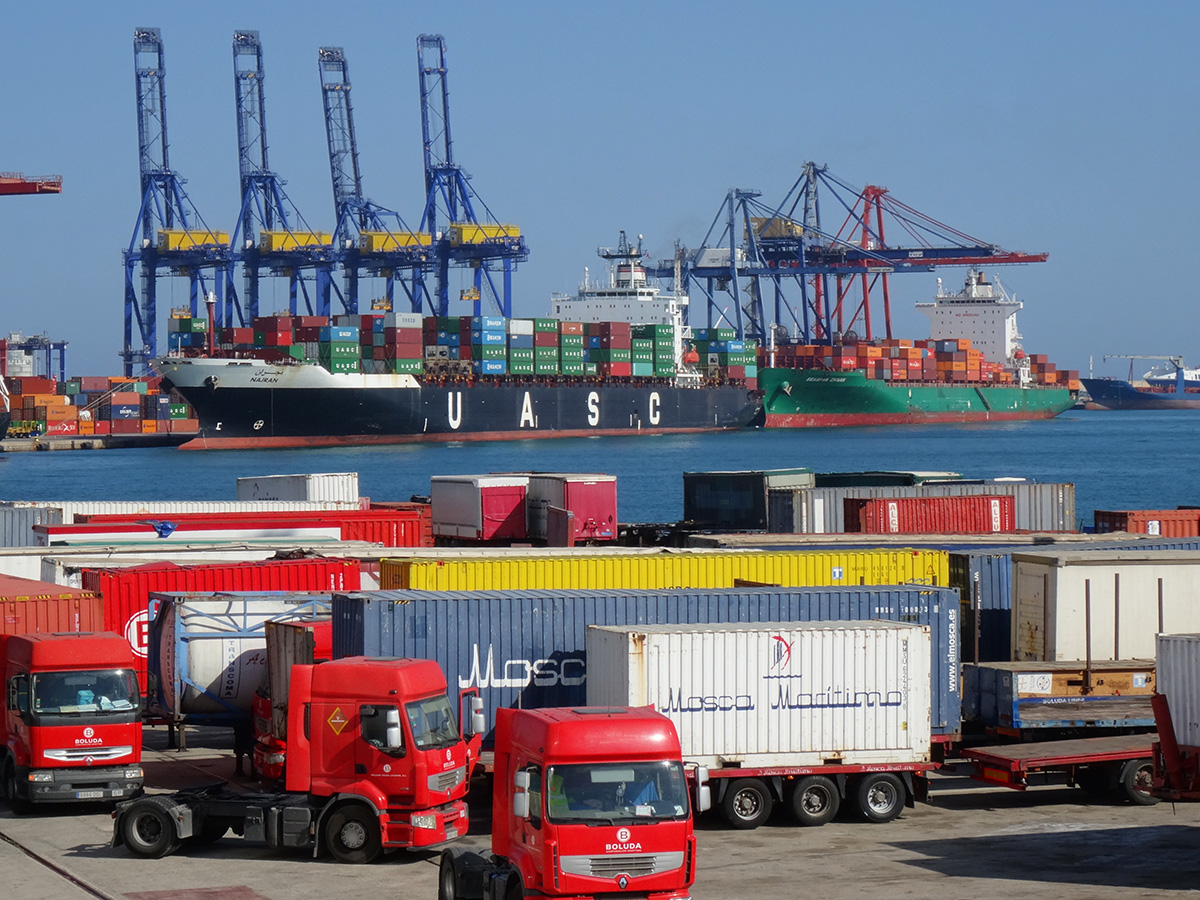 Shipping and supply chains generally have experienced major problems in 2021. The global pandemic disrupted the flow of trade, and the bounce-back in the summer of 2021 saw supply chains stretched as staff shortages and physical capacity limits hit the transport of freight. Ships were held up at ports waiting for unloading and onward transportation. The just-in-time methods of delivery and stock holding were put under considerable strain.
Shipping and supply chains generally have experienced major problems in 2021. The global pandemic disrupted the flow of trade, and the bounce-back in the summer of 2021 saw supply chains stretched as staff shortages and physical capacity limits hit the transport of freight. Ships were held up at ports waiting for unloading and onward transportation. The just-in-time methods of delivery and stock holding were put under considerable strain.
The problems were compounded by the blockage of the Suez canal in March 2021. As the blog, JIT or Illegit stated “When the large container ship, the Ever Given, en route from Malaysia to Felixtowe, was wedged in the Suez canal for six days in March this year, the blockage caused shipping to be backed up. By day six, 367 container ships were waiting to transit the canal. The disruption to supply cost some £730m.”
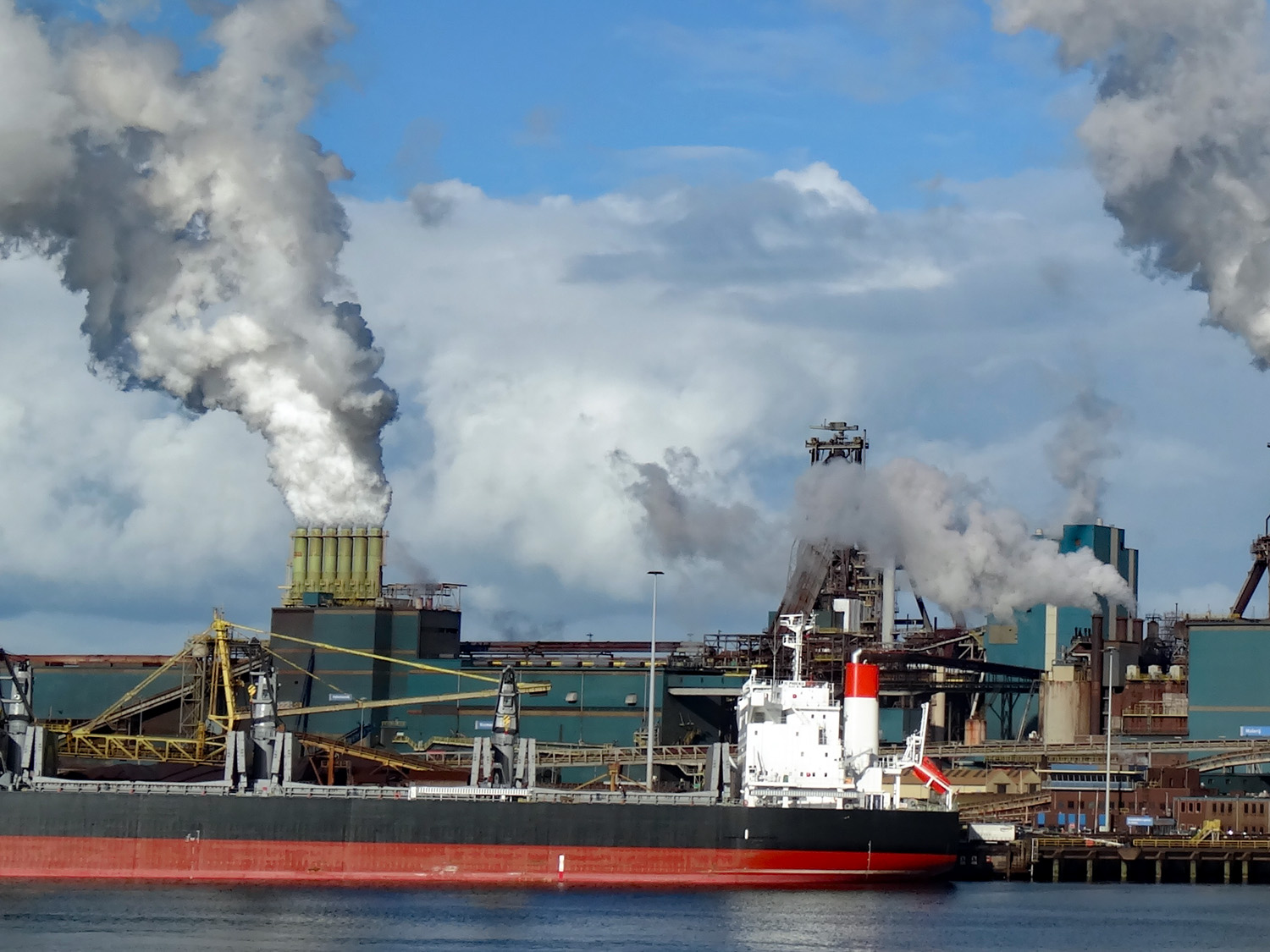 Another major event in 2021 was the Glasgow COP26 climate conference and the growing willingness of countries to commit to decarbonising their economies. But whereas electricity can be generated from renewable sources, and factories and land transport, such as cars, vans and trains, can run on electricity, it is not so easy to decarbonise shipping, especially for long journeys. They cannot plug in to the grid or draw down from overhead cables. They have to carry their own fuel sources with them.
Another major event in 2021 was the Glasgow COP26 climate conference and the growing willingness of countries to commit to decarbonising their economies. But whereas electricity can be generated from renewable sources, and factories and land transport, such as cars, vans and trains, can run on electricity, it is not so easy to decarbonise shipping, especially for long journeys. They cannot plug in to the grid or draw down from overhead cables. They have to carry their own fuel sources with them.
So, have the pandemic and the Ever Given incident exposed weaknesses in the global supply chain and in shipping in particular? And, if so, in what ways is shipping likely to adapt? And will the pressure to decarbonise lead to a radical rethinking of shipping and long-distance trade?
These are some of the issues considered in the podcast linked below. In it, “Shipping strategist Mark Williams tells Helen Lewis how examining the challenge of decarbonising shipping reveals a future which looks radically different to today, in a world where population, oil extraction and economic growth have all peaked, and trade is transformed”.
Listen to the podcast and have a go at the questions below which are based directly on it.
Podcast
Articles
Questions
- Why should we care about the shipping industry?
- What lessons can be drawn from the Ever Given incident?
- What structural changes are needed to make shipping an industry fit for the long-term demands of the global economy?
- Distinguish between just-in-time supply chains and just-in-case supply chains.
- What are ‘reshoring’ and ‘nearshoring’? How have they been driven by a growth in trade barriers?
- What are the implications of reshoring and nearshoring for (a) globalisation and (b) the UK’s trading position post-Brexit?
- What is the contribution of shipping to global greenhouse gas emissions? What other pollutants are emitted from the burning of heavy fuel oil (or ‘bunker fuel’)?
- What levers exist to persuade shipping companies to decarbonise their vessels?
- What alternative ‘green’ fuels are available to power ships?
- What are the difficulties in switching to such fuels?
- What economies of scale are there in shipping?
- How do the ownership patterns in shipping benefit decision making and change in the industry?
- Are ammonia or nuclear power the answer to the decarbonisation of shipping? What are their advantages and disadvantages?
- Why are President Xi’s views on the future of shipping so important?
- How will the decarbonisation of economies affect the demand for shipping?
- What is likely to happen to Chinese demand for iron ore and coking coal over the coming years? What effect will it have on shipping?
- How and by how much is the European Emissions Trading System likely to contribute to the decarbonisation of shipping?
- What is the Sea Cargo Charter? What difference is it likely to make to the decarbonisation of shipping?
- In what ways do cargo ships optimise productivity?
- What impact is slowing population growth, or even no population growth, likely to have on shipping?
 Pre-Covid 19, the climate change movement had gathered momentum with climate activist Greta Thunberg regularly in the news and people around the world striking in protest of inadequate government action on the climate crisis. However, now in a world overtaken by the pandemic, climate change is no longer at the centre and appears a more distant threat. The majority of the large climate change events due to take place this year have been delayed and policy announcements are aimed at supporting the current economic hardships. This is not surprising nor debatable, but there is a risk that, as Covid-19 dominates the news, policy and debates for a long time to come, this will overshadow any environmental initiatives that were due to be implemented.
Pre-Covid 19, the climate change movement had gathered momentum with climate activist Greta Thunberg regularly in the news and people around the world striking in protest of inadequate government action on the climate crisis. However, now in a world overtaken by the pandemic, climate change is no longer at the centre and appears a more distant threat. The majority of the large climate change events due to take place this year have been delayed and policy announcements are aimed at supporting the current economic hardships. This is not surprising nor debatable, but there is a risk that, as Covid-19 dominates the news, policy and debates for a long time to come, this will overshadow any environmental initiatives that were due to be implemented.
Governments around the globe are navigating their economies through the pandemic and starting to think about the future road to recovery. However, there is an argument that it doesn’t have to be a case of ‘either or’, as there is the potential for policies to address the Covid-19 crisis and climate change at the same time. How policy makers respond now could shape the fight against climate change for the future. One of the lessons from the pandemic is that quick responses to high impact risks are vital to reduce costs. With that in mind, and given the costs of climate change, it is arguable that now is the best time to address its challenges.
Climate change and Covid
 It is estimated that there was a total global loss of $3tn caused by natural disasters over the past decade. By 2050, cumulative damages from climate change are predicted to reach $8 trillion, impoverishing the world as a whole by 3% of GDP and the poorest regions by more. Climate activists argue that despite the economic consequences of climate change, the action taken by governments has been insufficient. In 2015, the then Bank of England governor, Mark Carney warned: ‘Once climate change becomes a defining issue for financial stability, it may already be too late.’
It is estimated that there was a total global loss of $3tn caused by natural disasters over the past decade. By 2050, cumulative damages from climate change are predicted to reach $8 trillion, impoverishing the world as a whole by 3% of GDP and the poorest regions by more. Climate activists argue that despite the economic consequences of climate change, the action taken by governments has been insufficient. In 2015, the then Bank of England governor, Mark Carney warned: ‘Once climate change becomes a defining issue for financial stability, it may already be too late.’
However, since the pandemic struck all over the world, there have been positive consequences for the environment. Pollution levels started dropping fast as airlines grounded fleets, car travel came to a stop and industries shut down. With 2.6bn people living under restrictions under their country’s lockdown, there has also been an impact on the environment, not just the spread of the virus. Given that the lockdowns across the world have come at huge social and human costs, is now not the time to ensure that these improvements for the environment are not just temporary but ignite long-term changes?
 Given the clear impacts and risks of Covid on peoples’ health, our ability to change our behaviour quickly has been striking. The importance of behaviour change has been brought to the centre and, arguably, it shows that we are capable of change when lives are at risk and are deemed more important than business-as-usual GDP growth. The application to climate change, however, is not as straightforward, as the costs to human lives are often viewed as a future problem.
Given the clear impacts and risks of Covid on peoples’ health, our ability to change our behaviour quickly has been striking. The importance of behaviour change has been brought to the centre and, arguably, it shows that we are capable of change when lives are at risk and are deemed more important than business-as-usual GDP growth. The application to climate change, however, is not as straightforward, as the costs to human lives are often viewed as a future problem.
Global cooperation
Dr Laure de Preux, Assistant Professor of Economics at Imperial College Business School, highlights the important role that cooperation across borders plays in the face of a global crisis like Coronavirus, and how that can be applied to the fight against climate change.
The big challenges the world is facing, including the climate change crisis, can only be dealt with efficiently through international cooperation. We cannot only act individually; the benefits of our actions are multiplied if integrated into a global strategy. In the case of COVID-19, social distancing measures can only be truly effective if they are adopted at a large scale.
World leaders are aware that their economies now face one of the most severe recessions in history as a consequence of the coronavirus restrictions. Governments are going to have to dedicate huge budgets to enable the economic activity to resume again. This presents a unique challenge, but also a massive opportunity for global cooperation. The question to be asked, therefore, is that if these stimulus packages are a one-off chance to transform the economy, how should the government spend it and what should be their focus? Should the recovery policies focus on creating a greener economy?
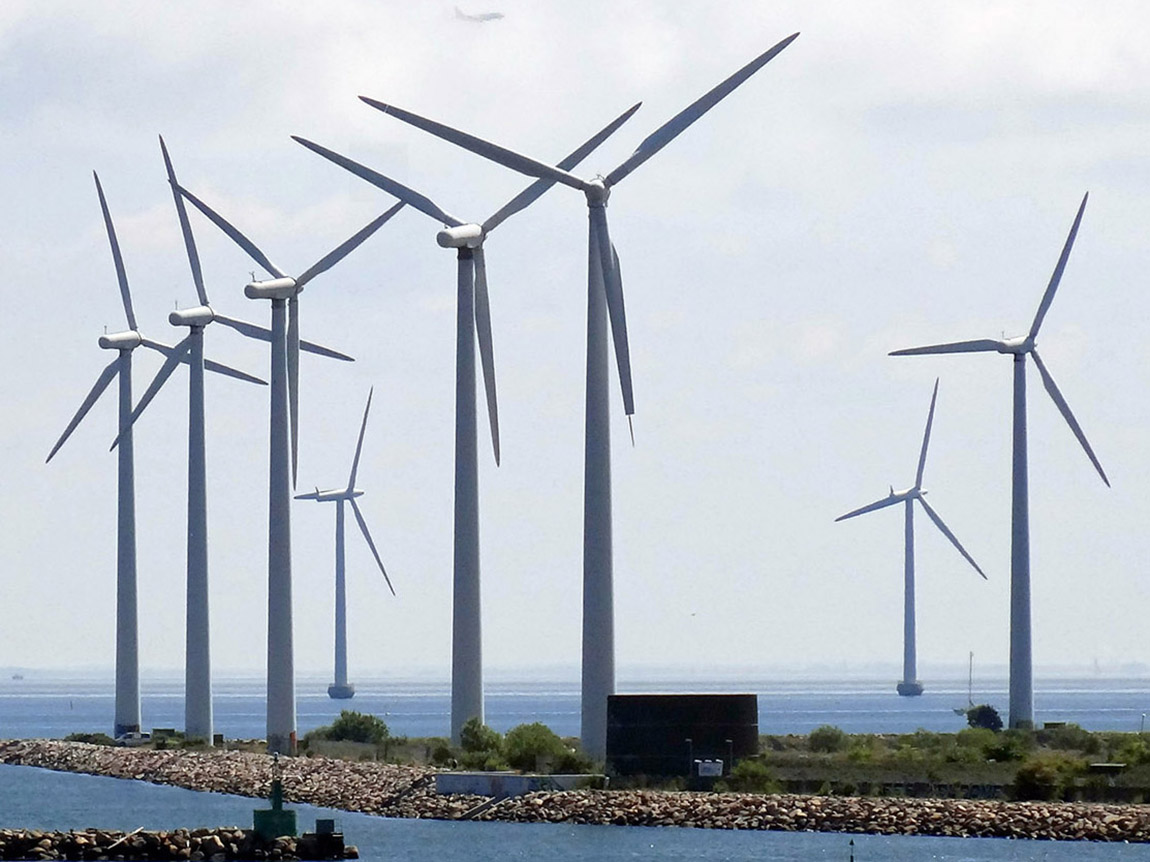 The European Union unveiled what it is calling the biggest ‘green’ stimulus package in history. Ursula von der Leyen, the European Commission president, told European Parliament members that this issue is about all nations and it is bigger than any one of them. The deputy Prime Minister of Spain, Teresa Ribera, states that there is a greater risk by not acting in this way. She argues that if the recovery is not green, then it will be nothing but a short-cut to solve the current problems rather than a true economic recovery.
The European Union unveiled what it is calling the biggest ‘green’ stimulus package in history. Ursula von der Leyen, the European Commission president, told European Parliament members that this issue is about all nations and it is bigger than any one of them. The deputy Prime Minister of Spain, Teresa Ribera, states that there is a greater risk by not acting in this way. She argues that if the recovery is not green, then it will be nothing but a short-cut to solve the current problems rather than a true economic recovery.
It is not just in Europe where the recovery has an environment focus. Joe Biden is believed to be planning a similarly huge green stimulus package for the US. The model echoes the vast investment projects of the New Deal that helped lift America out of the Great Depression in the 1930s.
There are sound economic reasons why politicians see green technology as a prudent investment. Renewable energy is now often cheaper than fossil fuels in large parts of the world and the technologies are proven and can be built at scale today. The argument for renewables providing a pathway for clean future growth is based on the logic of much of manufacturing – the more you produce, the cheaper it gets. However, China does not appear to have similar plans for their recovery. China produces almost a third of the world’s emissions, as much as the USA and the EU combined. At the annual National People’s Congress, there was no indication that the big expansion of coal-fired electricity generation would be reversed, even though it is also expanding the production of renewable energy. China expanded its coal-fired power stations as a key part of its stimulus package after the 2008 financial crisis.
Policy decisions
 The UK government receives ongoing pressure from energy companies. The boss of energy giant SSE, Alistair Phillips-Davies has warned that a failure to deal with climate change could eventually have a greater economic impact than coronavirus. SSE wants the UK government to encourage private investment in renewables by giving the green light to big new projects, such as hydrogen and carbon capture plants and boosting electric vehicles. Despite the impacts of climate change not being immediately felt in comparison to Covid-19, Phillips-Davies argues that a failure to deal with climate change could lead to great long-term impacts:
The UK government receives ongoing pressure from energy companies. The boss of energy giant SSE, Alistair Phillips-Davies has warned that a failure to deal with climate change could eventually have a greater economic impact than coronavirus. SSE wants the UK government to encourage private investment in renewables by giving the green light to big new projects, such as hydrogen and carbon capture plants and boosting electric vehicles. Despite the impacts of climate change not being immediately felt in comparison to Covid-19, Phillips-Davies argues that a failure to deal with climate change could lead to great long-term impacts:
While it is still too early to predict with confidence the full human, social and economic impact of coronavirus, we can say with certainty that significant investment will be needed to rebuild the UK economy in its wake.
It is clear that any pandemic-induced financial decisions made over the next 12 months will shape the global economy for the next decade. The full impact of the virus on climate change will be determined by the world’s stimulus measures adopted post-pandemic. Following the 2008 financial crisis, the energy-intensive stimulus measures that followed, particularly in China, boosted emissions. Therefore, if we are to meet the reduction in emissions target our response needs to be green, helping to shape a sustainable future. Dr Alex Koberle, of the Grantham Institute at Imperial College London, argues that Governments should take time to reflect, learn from past mistakes and redirect development towards a sustainable future.
Shouldn’t growth be given priority?
With 1.6 billion people working in the informal economy worldwide reckoned to be in immediate danger of losing their livelihoods (according to the International Labour Organization), is now the right time to be focusing on the climate? Industries such as airlines and car manufacturing are strategic industries, employing millions of people. Headlines of longer-term environmental targets will be given less importance than headlines of job losses. Recovery relies on the government finding ways to employ lots and lots of people. There is a close relationship between real GDP, employment and energy consumption. Therefore, any policies aimed at reducing greenhouse gas emissions, unless carefully directed, could reduce economic growth and employment for both less and more developed economies. Such policies would increase the cost of conventional energy sharply.
Critics of a green energy policy for recovery argue that investing in renewable energy ignores the adverse effects of reduced investment and higher energy costs in other sectors. By governments prioritising policy to focus on the environment, they could harm the ability of most people to improve their own circumstances, especially given the terrible economic shock caused by the lockdowns.
Conclusion
 With the majority of news in recent months providing little joy, there has been at least the positive impact on the environment. However, advocates say it not a cause for celebration and warn that any benefits are likely to be short lived. There have been some positive behavioural impacts but the true test will be what happens in the recovery phase. If the focus is returned to business as usual what happens to the targets actioned prior to Covid-19?
With the majority of news in recent months providing little joy, there has been at least the positive impact on the environment. However, advocates say it not a cause for celebration and warn that any benefits are likely to be short lived. There have been some positive behavioural impacts but the true test will be what happens in the recovery phase. If the focus is returned to business as usual what happens to the targets actioned prior to Covid-19?
The immediate priority of all governments right now is to control the pandemic and to save lives. As their policy interventions have an impact and economies start to emerge from this crisis, then there is an important debate to be had about how new investments can help create a cleaner, greener recovery. We have learnt from the current pandemic that changes can be made when consequences are imminent, however, climate change is a threat that doesn’t go away, and is arguably just as urgent. Solutions to both crises can be integrated into a coherent response to propel the global economy towards sustainable growth and increased resilience.
Articles
Letter
Questions
- Are government attempts to reduce the impact of climate change beneficial or harmful to UK firms?
- What policy instruments can the government use to increase economic activity?
- How does an increase in investment affect aggregate demand?
- What are the costs and benefits of economic growth?
- Why can climate change be described as a market failure?
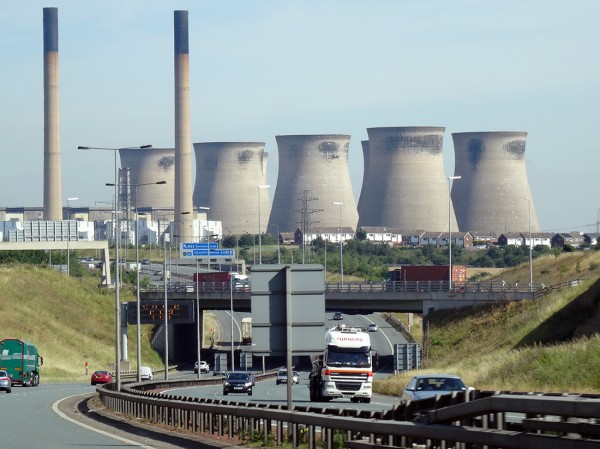 In December, most of the countries of the world will meet in Paris at the 21st annual United Nations Conference of the Parties (COP) on climate change. COP21 ‘will, for the first time in over 20 years of UN negotiations, aim to achieve a legally binding and universal agreement on climate, with the aim of keeping global warming below 2°C.’
In December, most of the countries of the world will meet in Paris at the 21st annual United Nations Conference of the Parties (COP) on climate change. COP21 ‘will, for the first time in over 20 years of UN negotiations, aim to achieve a legally binding and universal agreement on climate, with the aim of keeping global warming below 2°C.’
When the Copenhagen conference (COP15) ended in disagreement in 2009, few people thought that the increase in renewable energy would be anything like sufficient to prevent global temperatures rising more than 2°C. But things have dramatically changed in the intervening six years.
 Solar power and other renewables have increased dramatically and the technology for the cleaner burning of fossil fuels, including carbon capture and storage, has developed rapidly.
Solar power and other renewables have increased dramatically and the technology for the cleaner burning of fossil fuels, including carbon capture and storage, has developed rapidly.
But perhaps the most important change has been the attitudes of governments. No longer is it a case of Europe and other developed countries moving in the direction of renewables, while developing countries, and, in particular, China and India, argue that their economic development requires a rapid expansion of coal-fired power stations. Now China, India and many other emerging countries are rapidly developing their renewable sectors. This is partly driven by the fall in the costs of renewables and partly by worries that climate change will directly effect them. Now the ‘pro-coal’ countries are in a minority.
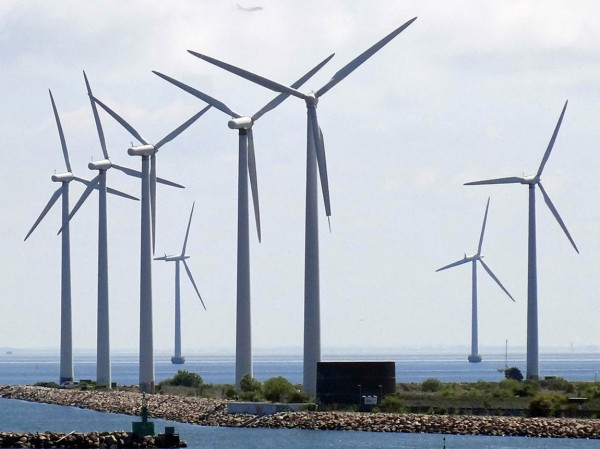 And industry is realising that significant profit is to be made from the development and installation of power plants using renewable energy. This is driving both R&D and investment. As the Telegraph article, linked below, points out, in 2009 ‘the International Energy Agency (IEA) was still predicting that solar power would struggle to reach 20 gigawatts by now. Few could have foretold that it would in fact explode to 180 gigawatts – over three times Britain’s total power output – as costs plummeted, and that almost half of all new electricity installed in the US in 2013 and 2014 would come from solar’.
And industry is realising that significant profit is to be made from the development and installation of power plants using renewable energy. This is driving both R&D and investment. As the Telegraph article, linked below, points out, in 2009 ‘the International Energy Agency (IEA) was still predicting that solar power would struggle to reach 20 gigawatts by now. Few could have foretold that it would in fact explode to 180 gigawatts – over three times Britain’s total power output – as costs plummeted, and that almost half of all new electricity installed in the US in 2013 and 2014 would come from solar’.
So is this a good news story? Will real progress be made at COP21 in Paris? The articles explore the issues.
Articles
Paris climate deal to ignite a $90 trillion energy revolution The Telegraph, Ambrose Evans-Pritchard (28/10/15)
OP21 deal critical for low-carbon economy Japan Times, Carlos Ghosn (29/10/15)
Is Solar Without Subsidies Now Viable? Oilprice.com, Michael McDonald (22/10/15)
Policy Paper
The road to Paris and beyond Centre for Climate Change Economics and Policy, Grantham Research Institute on Climate Change and the Environment (LSE), Rodney Boyd, Fergus Green and Nicholas Stern (August 2015)
Report
Energy and Climate Change International Energy Agency (October 2015)
Questions
- What are the drivers for a move from fossil fuels to renewables? Are they similar dirvers in both developed and developing countries?
- What externalities are involved in energy production (a) from fossil fuels; (b) from renewables?
- What policies can be adopted to internalise the externalities?
- What are the merits and problems of a carbon trading scheme? What determines its effectiveness in reducing CO2 emissions?
- Why are more and more investors moving into the renewable energy sector? Could this become a speculative bubble? Explain.
- How might game theory help to explain the process and outcomes of international negotiations over climate change and energy use?
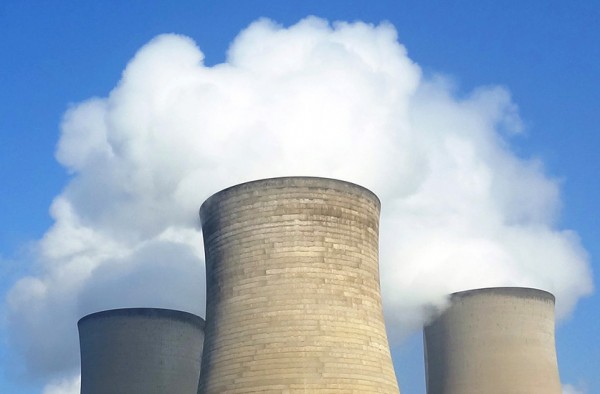 Many UK coal mines closed in the 1970s and 80s. Coal extraction was too expensive in the UK to compete with cheap imported coal and many consumers were switching away from coal to cleaner fuels. Today many shale oil producers in the USA are finding that extraction has become unprofitable with oil prices having fallen by some 50% since mid-2014 (see A crude indicator of the economy (Part 2) and The price of oil in 2015 and beyond). So is it a bad idea to invest in fossil fuel production? Could such assets become unusable – what is known as ‘stranded assets‘?
Many UK coal mines closed in the 1970s and 80s. Coal extraction was too expensive in the UK to compete with cheap imported coal and many consumers were switching away from coal to cleaner fuels. Today many shale oil producers in the USA are finding that extraction has become unprofitable with oil prices having fallen by some 50% since mid-2014 (see A crude indicator of the economy (Part 2) and The price of oil in 2015 and beyond). So is it a bad idea to invest in fossil fuel production? Could such assets become unusable – what is known as ‘stranded assets‘?
In a speech on 3 March 2015, Confronting the challenges of tomorrow’s world, delivered at an insurance conference, Paul Fisher, Deputy Governor of the Bank of England, warned that a switch to both renewable sources of energy and actions to save energy could hit investors in fossil fuel companies.
‘One live risk right now is of insurers investing in assets that could be left ‘stranded’ by policy changes which limit the use of fossil fuels. As the world increasingly limits carbon emissions, and moves to alternative energy sources, investments in fossil fuels and related technologies – a growing financial market in recent decades – may take a huge hit. There are already a few specific examples of this having happened.
… As the world increasingly limits carbon emissions, and moves to alternative energy sources, investments in fossil fuels and related technologies – a growing financial market in recent decades – may take a huge hit. There are already a few specific examples of this having happened.’
Much of the known reserves of fossil fuels could not be used if climate change targets are to be met. And investment in the search for new reserves would be of little value unless they were very cheap to extract. But will climate change targets be met? 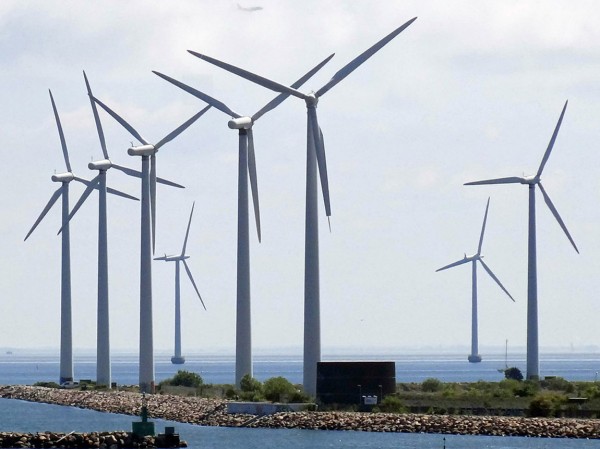 That is hard to predict and depends on international political agreements and implementation, combined with technological developments in fields such as clean-burn technologies, carbon capture and renewable energy. The scale of these developments is uncertain. As Paul Fisher said in his speech:
That is hard to predict and depends on international political agreements and implementation, combined with technological developments in fields such as clean-burn technologies, carbon capture and renewable energy. The scale of these developments is uncertain. As Paul Fisher said in his speech:
‘Tomorrow’s world inevitably brings change. Some changes can be forecast, or guessed by extrapolating from what we know today. But there are, inevitably, the unknown unknowns which will help shape the future. … As an ex-forecaster I can tell you confidently that the only thing we can be certain of is that there will be changes that no one will predict.’
The following articles look at the speech and at the financial risks of fossil fuel investment. The Guardian article also provides links to some useful resources.
Articles
Bank of England warns of huge financial risk from fossil fuel investments The Guardian, Damian Carrington (3/3/15)
PRA warns insurers on fossil fuel assets Insurance Asset Risk (3/3/15)
Energy trends changing investment dynamics UPI, Daniel J. Graeber (3/3/15)
Speech
Confronting the challenges of tomorrow’s world Bank of England, Paul Fisher (3/3/15)
Questions
- What factors are taken into account by investors in fossil fuel assets?
- Why might a power station become a ‘stranded asset’?
- How is game theory relevant in understanding the process of climate change negotiations and the outcomes of such negotiations?
- What social functions are filled by insurance?
- Why does climate change impact on insurers on both sides of their balance sheets?
- What is the Prudential Regulation Authority (PRA)? What is its purpose?
- Explain what is meant by ‘unknown unknowns’. How do they differ from ‘known unknowns’?
- How do the arguments in the article and the speech relate to the controversy about investing in fracking in the UK?
- Explain and comment on the statement by World Bank President, Jim Yong Kim, that sooner rather than later, financial regulators must address the systemic risk associated with carbon-intensive activities in their economies.
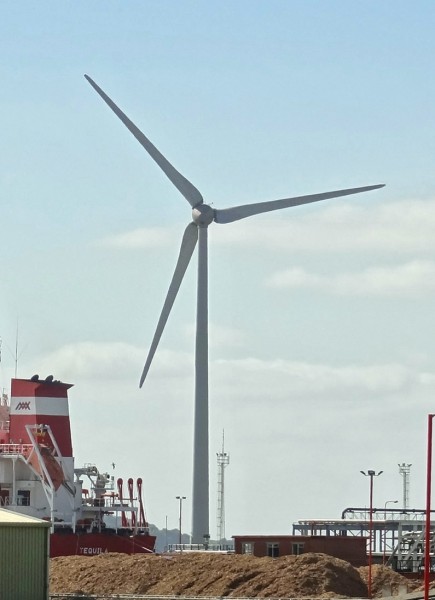 When an industry produces positive externalities, there is an argument for granting subsidies. To achieve the socially efficient output in an otherwise competitive market, the marginal subsidy should be equal to the marginal externality. This is the main argument for subsidising wind power. It helps in the switch to renewable energy away from fossil fuels. There is also the secondary argument that subsidies help encourage the development of technologies that would be too uncertain to fund at market rates.
When an industry produces positive externalities, there is an argument for granting subsidies. To achieve the socially efficient output in an otherwise competitive market, the marginal subsidy should be equal to the marginal externality. This is the main argument for subsidising wind power. It helps in the switch to renewable energy away from fossil fuels. There is also the secondary argument that subsidies help encourage the development of technologies that would be too uncertain to fund at market rates.
If subsidies are to be granted, it is important that they are carefully designed. Not only does their rate need to reflect the size of the positive externalities, but also they should not entail any perverse incentive effects. But this is the claim about subsidies given to wind turbines: that they create an undesirable side effect.
Small-scale operators are encouraged to build small turbines by offering them a higher subsidy per kilowatt generated (through higher ‘feed-in’ tariffs). But according to a report by the Institute for Public Policy Research (IPPR), this is encouraging builders and operators of large turbines to ‘derate’ them. This involves operating them below capacity in order to get the higher tariff. As the IPPR overview states:
The scheme is designed to support small-scale providers, but the practice of under-reporting or ‘derating’ turbines’ generating capacity to earn a higher subsidy is costing the taxpayer dearly and undermining the competitiveness of Britain’s clean energy sector.
The loophole sees developers installing ‘derated’ turbines – that is, turbines which are ‘capped’ so that they generate less energy. Turbines are derated in this way so that developers and investors are able to qualify for the more generous subsidy offered to lower-capacity turbines, generating 100–500kW. 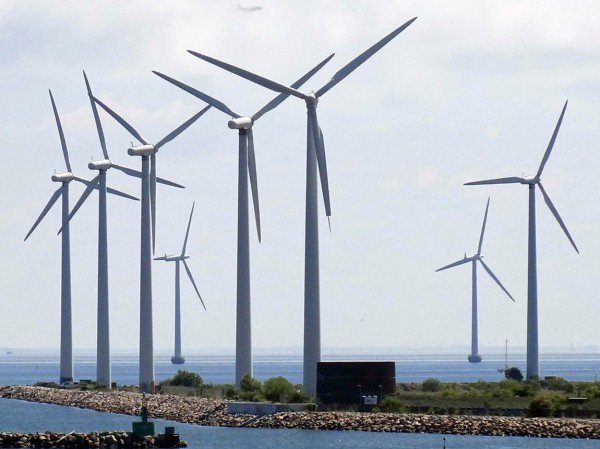 By installing derated turbines, developers are making larger profits off a feature of the scheme that was designed to support small-scale projects. Currently, the rating of a turbine is declared by the manufacturer and installer, resulting in a lack of external scrutiny of the system.
By installing derated turbines, developers are making larger profits off a feature of the scheme that was designed to support small-scale projects. Currently, the rating of a turbine is declared by the manufacturer and installer, resulting in a lack of external scrutiny of the system.
The subsidies are funded by consumers through higher electricity prices. As much as £400 million could be paid in excess subsidies. The lack of scrutiny means that operators could be receiving as much as £100 000 per year per turbine in excess subsidies.
However, as the articles below make clear, the facts are disputed by the wind industry body, RenewableUK. Nevertheless, the report is likely to stimulate debate and hopefully a closing of the loophole.
Video
 Turbine power: the cost of wind power to taxpayers Channel 4 News, Tom Clarke (10/2/15)
Turbine power: the cost of wind power to taxpayers Channel 4 News, Tom Clarke (10/2/15)
Articles
Wind subsidy loophole boosts spread of bigger turbines Financial Times, Pilita Clark (10/2/15)
Call to Close Wind Power ‘Loophole’ Herald Scotland, Emily Beament (10/2/15)
Wind farm developers hit back at ‘excessive subsidy’ claims Business Green, Will Nichols (10/2/15)
The £400million feed-in frenzy: Green energy firms accused of making wind turbines LESS efficient so they appear weak enough to win small business fund Mail Online, Ben Spencer (10/2/15)
Wind power subsidy ‘loophole’ identified by new report Engineering Technology Magazine, Jonathan Wilson (11/2/15)
Report
Feed-in Frenzy Institute for Public Policy Research, Joss Garman and Charles Ogilvie (February 2015)
Questions
- Draw a diagram to demonstrate the optimum marginal rate of a subsidy and the effect of the subsidy on output.
- Who should pay for subsidies: consumers, the government (i.e. taxpayers generally), electricity companies through taxes on profits made from electricity generation using fossil fuels, some other source? Explain your thinking.
- What is the argument for giving a higher subsidy to operators of small wind turbines?
- If wind power is to be subsidised, is it better to subsidise each unit of output of electricity, or the construction of wind turbines or both? Explain.
- What could Ofgem do (or the government require Ofgem to do) to improve the regulation of the wind turbine industry?
 Shipping and supply chains generally have experienced major problems in 2021. The global pandemic disrupted the flow of trade, and the bounce-back in the summer of 2021 saw supply chains stretched as staff shortages and physical capacity limits hit the transport of freight. Ships were held up at ports waiting for unloading and onward transportation. The just-in-time methods of delivery and stock holding were put under considerable strain.
Shipping and supply chains generally have experienced major problems in 2021. The global pandemic disrupted the flow of trade, and the bounce-back in the summer of 2021 saw supply chains stretched as staff shortages and physical capacity limits hit the transport of freight. Ships were held up at ports waiting for unloading and onward transportation. The just-in-time methods of delivery and stock holding were put under considerable strain. Another major event in 2021 was the Glasgow COP26 climate conference and the growing willingness of countries to commit to decarbonising their economies. But whereas electricity can be generated from renewable sources, and factories and land transport, such as cars, vans and trains, can run on electricity, it is not so easy to decarbonise shipping, especially for long journeys. They cannot plug in to the grid or draw down from overhead cables. They have to carry their own fuel sources with them.
Another major event in 2021 was the Glasgow COP26 climate conference and the growing willingness of countries to commit to decarbonising their economies. But whereas electricity can be generated from renewable sources, and factories and land transport, such as cars, vans and trains, can run on electricity, it is not so easy to decarbonise shipping, especially for long journeys. They cannot plug in to the grid or draw down from overhead cables. They have to carry their own fuel sources with them. The future of trade
The future of trade Pre-Covid 19, the climate change movement had gathered momentum with climate activist Greta Thunberg regularly in the news and people around the world striking in protest of inadequate government action on the climate crisis. However, now in a world overtaken by the pandemic, climate change is no longer at the centre and appears a more distant threat. The majority of the large climate change events due to take place this year have been delayed and policy announcements are aimed at supporting the current economic hardships. This is not surprising nor debatable, but there is a risk that, as Covid-19 dominates the news, policy and debates for a long time to come, this will overshadow any environmental initiatives that were due to be implemented.
Pre-Covid 19, the climate change movement had gathered momentum with climate activist Greta Thunberg regularly in the news and people around the world striking in protest of inadequate government action on the climate crisis. However, now in a world overtaken by the pandemic, climate change is no longer at the centre and appears a more distant threat. The majority of the large climate change events due to take place this year have been delayed and policy announcements are aimed at supporting the current economic hardships. This is not surprising nor debatable, but there is a risk that, as Covid-19 dominates the news, policy and debates for a long time to come, this will overshadow any environmental initiatives that were due to be implemented. It is estimated that there was a total global loss of $3tn caused by natural disasters over the past decade. By 2050, cumulative damages from climate change are predicted to reach $8 trillion, impoverishing the world as a whole by 3% of GDP and the poorest regions by more. Climate activists argue that despite the economic consequences of climate change, the action taken by governments has been insufficient. In 2015, the then Bank of England governor, Mark Carney warned: ‘Once climate change becomes a defining issue for financial stability, it may already be too late.’
It is estimated that there was a total global loss of $3tn caused by natural disasters over the past decade. By 2050, cumulative damages from climate change are predicted to reach $8 trillion, impoverishing the world as a whole by 3% of GDP and the poorest regions by more. Climate activists argue that despite the economic consequences of climate change, the action taken by governments has been insufficient. In 2015, the then Bank of England governor, Mark Carney warned: ‘Once climate change becomes a defining issue for financial stability, it may already be too late.’  Given the clear impacts and risks of Covid on peoples’ health, our ability to change our behaviour quickly has been striking. The importance of behaviour change has been brought to the centre and, arguably, it shows that we are capable of change when lives are at risk and are deemed more important than business-as-usual GDP growth. The application to climate change, however, is not as straightforward, as the costs to human lives are often viewed as a future problem.
Given the clear impacts and risks of Covid on peoples’ health, our ability to change our behaviour quickly has been striking. The importance of behaviour change has been brought to the centre and, arguably, it shows that we are capable of change when lives are at risk and are deemed more important than business-as-usual GDP growth. The application to climate change, however, is not as straightforward, as the costs to human lives are often viewed as a future problem.  The European Union unveiled what it is calling the biggest ‘green’ stimulus package in history. Ursula von der Leyen, the European Commission president, told European Parliament members that this issue is about all nations and it is bigger than any one of them. The deputy Prime Minister of Spain, Teresa Ribera, states that there is a greater risk by not acting in this way. She argues that if the recovery is not green, then it will be nothing but a short-cut to solve the current problems rather than a true economic recovery.
The European Union unveiled what it is calling the biggest ‘green’ stimulus package in history. Ursula von der Leyen, the European Commission president, told European Parliament members that this issue is about all nations and it is bigger than any one of them. The deputy Prime Minister of Spain, Teresa Ribera, states that there is a greater risk by not acting in this way. She argues that if the recovery is not green, then it will be nothing but a short-cut to solve the current problems rather than a true economic recovery.  The UK government receives ongoing pressure from energy companies. The boss of energy giant SSE, Alistair Phillips-Davies has warned that a failure to deal with climate change could eventually have a greater economic impact than coronavirus. SSE wants the UK government to encourage private investment in renewables by giving the green light to big new projects, such as hydrogen and carbon capture plants and boosting electric vehicles. Despite the impacts of climate change not being immediately felt in comparison to Covid-19, Phillips-Davies argues that a failure to deal with climate change could lead to great long-term impacts:
The UK government receives ongoing pressure from energy companies. The boss of energy giant SSE, Alistair Phillips-Davies has warned that a failure to deal with climate change could eventually have a greater economic impact than coronavirus. SSE wants the UK government to encourage private investment in renewables by giving the green light to big new projects, such as hydrogen and carbon capture plants and boosting electric vehicles. Despite the impacts of climate change not being immediately felt in comparison to Covid-19, Phillips-Davies argues that a failure to deal with climate change could lead to great long-term impacts:  With the majority of news in recent months providing little joy, there has been at least the positive impact on the environment. However, advocates say it not a cause for celebration and warn that any benefits are likely to be short lived. There have been some positive behavioural impacts but the true test will be what happens in the recovery phase. If the focus is returned to business as usual what happens to the targets actioned prior to Covid-19?
With the majority of news in recent months providing little joy, there has been at least the positive impact on the environment. However, advocates say it not a cause for celebration and warn that any benefits are likely to be short lived. There have been some positive behavioural impacts but the true test will be what happens in the recovery phase. If the focus is returned to business as usual what happens to the targets actioned prior to Covid-19?





